 W
W816 Nuclear Military Plant is an unfinished Chinese underground nuclear weapons production facility and the largest man-made tunnel structure in the world. A military megaproject, the nuclear base is located near what is now suburban Fuling, a municipality in Chongqing, China. In 2010, it was opened to Chinese tourists. It is a distinct network of nuclear-weapons manufacturing tunnels to the likewise defunct Underground Project 131 and the still operational "Underground Great Wall of China."
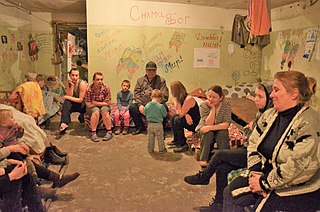 W
WAir raid shelters, also known as bomb shelters, are structures for the protection of non-combatants as well as combatants against enemy attacks from the air. They are similar to bunkers in many regards, although they are not designed to defend against ground attack.
 W
WThe Albergo diurno Venezia is a structure built under Piazza Oberdan in Milan, on the western side towards Via Tadino.
 W
WThe Assumption Monastery of the Caves is located in Crimea, near Bakhchysarai. It is a cave monastery carved out of a cliff.
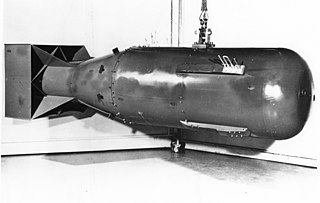 W
WA blast shelter is a place where people can go to protect themselves from blasts and explosions, like those from bombs, or in hazardous worksites, such as on oil and gas refineries or petrochemical facilities. It differs from a fallout shelter, in that its main purpose is to protect from shock waves and overpressure instead of from radioactive precipitation, as a fallout shelter does. It is also possible for a shelter to protect from both blasts and fallout.
 W
WThe Bourbon Tunnel, Tunnel Borbonico or Bourbon Gallery is an ancient underground passage, constructed for military purposes to connect the Royal Palace to military barracks in Naples, Italy.
 W
WA burial vault is a structural underground tomb. It houses the casket and protects them through a lined, sealed container. A burial vault shields the casket from maintenance equipment and resists water. Different levels of burial vaults are offered, such as premium, basic, and standard protection.
 W
WThe Cave Clan is a primarily Australian group dedicated to urban exploration.
 W
WA cave dweller, or troglodyte, is a human being who inhabits a cave or the area beneath the overhanging rocks of a cliff.
 W
WCities of the Underworld is an American documentary television series that premiered on March 2, 2007, on the History channel. The program explores the subterranean environment and culture beneath various civilizations. The series was originally hosted and narrated by Eric Geller for the majority of episodes in season 1, with Don Wildman taking over for the rest of season 1 and seasons 2 and 3.
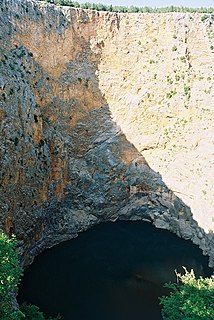 W
WA sinkhole, also known as a cenote, sink, sink-hole, swallet, swallow hole, or doline, is a depression or hole in the ground caused by some form of collapse of the surface layer. Most are caused by karst processes – the chemical dissolution of carbonate rocks or suffosion processes. Sinkholes vary in size from 1 to 600 m both in diameter and depth, and vary in form from soil-lined bowls to bedrock-edged chasms. Sinkholes may form gradually or suddenly, and are found worldwide.
 W
WThe Federation of Damanhur, often called simply Damanhur, is a commune, ecovillage, and spiritual community situated in the Piedmont region of northern Italy about 50 kilometres (31 mi) north of the city of Turin. It is located in the foothills of the Alps in the Chiusella Valley, bordering on the Gran Paradiso National Park. The community has its own constitution and currency, the Credito.
 W
WA deep geological repository is a way of storing toxic or radioactive waste within a stable geologic environment. It entails a combination of waste form, waste package, engineered seals and geology that is suited to provide a high level of long-term isolation and containment without future maintenance. A number of mercury, cyanide and arsenic waste repositories are operating worldwide including Canada and Germany.
 W
WIn Disney theme parks, the utilidor system is a system of some of the world's largest utility tunnels, mainly for Walt Disney World's Magic Kingdom in Florida. The utilidors, short for utility corridors, are a part of Disney's "backstage" (behind-the-scenes) area. They allow Disney employees to perform park support operations, such as trash removal, and for costumed characters to quickly reach their destinations on the surface out of the sight of guests to avoid ruining the illusion that is being created.
 W
WA dry well or drywell is an underground structure that disposes of unwanted water, most commonly surface runoff and stormwater and in some cases greywater. It is a covered, porous-walled chamber that allows water to slowly soak into the ground, dissipating into the groundwater. Such structures are often called a soakaway in the United Kingdom, a soakwell in Australia, and a soak pit in India.
 W
WAn erdstall is a type of tunnel found across Europe. They are of unknown origin but are believed to date from the Middle Ages. A variety of purposes have been theorized, including that they were used as escape routes or hiding places, but the most prominent theory is that they served a religious or spiritual purpose.
 W
WA fallout shelter is an enclosed space specially designed to protect occupants from radioactive debris or fallout resulting from a nuclear explosion. Many such shelters were constructed as civil defense measures during the Cold War.
 W
WSubterranean fiction is a subgenre of adventure fiction, science fiction, or fantasy which focuses on fictional underground settings, sometimes at the center of the Earth or otherwise deep below the surface. The genre is based on, and has in turn influenced, the Hollow Earth theory. The earliest works in the genre were Enlightenment-era philosophical or allegorical works, in which the underground setting was often largely incidental. In the late 19th century, however, more pseudoscientific or proto-science-fictional motifs gained prevalence. Common themes have included a depiction of the underground world as more primitive than the surface, either culturally, technologically or biologically, or in some combination thereof. The former cases usually see the setting used as a venue for sword-and-sorcery fiction, while the latter often features cryptids or creatures extinct on the surface, such as dinosaurs or archaic humans. A less frequent theme has the underground world much more technologically advanced than the surface one, typically either as the refugium of a lost civilization, or as a secret base for space aliens.
 W
WFinnis souterrain, also known locally as Binder's Cove, is an excavated drystone souterrain in Finnis, south of Dromara, County Down, Northern Ireland. The site is a scheduled monument and is one of only a few souterrains open to the public.
 W
WThe Fontanelle cemetery in Naples is a charnel house, an ossuary, located in a cave in the tuff hillside in the Materdei section of the city. It is associated with a chapter in the folklore of the city. By the time the Spanish moved into the city in the early 16th century, there was already concern over where to locate cemeteries, and moves had been taken to locate graves outside of the city walls. Many Neapolitans, however, insisted on being interred in their local churches. To make space in the churches for the newly interred, undertakers started removing earlier remains outside the city to the cave, the future Fontanelle cemetery. The remains were interred shallowly and then joined in 1656 by thousands of anonymous corpses, victims of the great plague of that year.
 W
WThe Għar Għerduf catacombs at Ta' Kerċem, also known as Għar Gerduf, are the only surviving early Christian catacombs or paleochristian hypogea in Gozo, Malta. Għar Għerduf is a unique Roman burial site in Gozo, which has for centuries attracted the attention of scholars interested in Maltese archaeology. The site was visited by erudite visitors who often included a description of the place as they did for Ġgantija and the Xagħra Stone Circle.
 W
WA grotto is a natural or artificial cave used by humans in both modern times and antiquity, and historically or prehistorically. Naturally occurring grottoes are often small caves near water that are usually flooded or liable to flood at high tide. Sometimes, artificial grottoes are used as garden features. The Grotta Azzurra at Capri and the grotto at the Tiberius' Villa Jovis in the Bay of Naples are examples of popular natural seashore grottoes.
 W
WThe Hollow Earth is a concept proposing that the planet Earth is entirely hollow or contains a substantial interior space. Notably suggested by Edmond Halley in the late 17th century, the notion was disproved, first tentatively by Pierre Bouguer in 1740, then definitively by Charles Hutton in his Schiehallion experiment around 1774.
 W
WA hypogeum or hypogaeum is an underground temple or tomb.
 W
WThe Lascaris War Rooms are an underground complex of tunnels and chambers in Valletta, Malta that housed the War Headquarters from where the defence of the island was conducted during the Second World War. The rooms were later used by NATO and are now open to the public as a museum.
 W
WA cave monastery is a monastery built in caves, with possible outside facilities. The 3rd-century monk St. Antony the Great, known as the founder of monasticism, lived in a cave.Albania Qafthanë Cave Church, cave church near Urakë, Albania. St. Mary's Church, cave church in Maligrad, an island in the Prespa lake Armenia Geghard cave monastery/fortress Bulgaria Aladzha Monastery Albotin Monastery Basarbovo Monastery Rock-hewn Churches of Ivanovo Cave monasteries of Krepcha Monasteries of Provadia Cave monasteries on the Plateau of Shumen Cave monasteries of Tervel Ethiopia Monolithic church Iraq Rabban Hormizd Monastery, Alqosh Mar Qayuma Monastery, Dooreh France Abbey of Saint-Roman, Beaucaire, Gard Georgia David Gareja monastery complex Vanis Kvabebi cave monastery/fortress, Javakheti Plateau Vardzia cave city and monastery Hungary Gellért Hill Cave chapels and monastery, Budapest North Macedonia Kališta Monastery, Struga Romania Basarabi Cave Complex Corbii de Piatră Nămăiești Russia Monastery of the Caves, Nizhny Novgorod Pskov Cave Monastery, Pskov Oblast Divnogorye and Saviour Convent, Voronezh Oblast Serbia Blagoveštenje Crna Reka Gornjak Kađenica Churches of Kovilje Monastery Church of Sts. Peter and Paul, also known as the Cave Church, 14th-century church in Lukovo Church of Sts. Peter and Paul, in Rsovci, where was painted a unique fresco of bald Jesus Hermitage of St. Peter Koriški Savina Thailand Wat Tham Khan, Sakon Nakhon province Tiger Cave Temple, Krabi Turkey Cappadocia cave monasteries Cave monastery of İnceğiz Church of Saint Peter Ukraine In the Kitaev Poustinia, Kiev Assumption Cave Monastery and Inkerman Cave Monastery in the Crimea Assumption Cave Monastery in Zymne, near Volodymyr-Volynskyi Bakota Cave Monastery in Bakota, near Kamianets-Podilskyi Kiev Pechersk Lavra and Eletsky Monastery
 W
WUnderground living refers to living below the ground's surface, whether in natural or manmade caves or structures. Underground dwellings are an alternative to above-ground dwellings for some home seekers, including those who are looking to minimize impact on the environment. Factories and office buildings can benefit from underground facilities for many of the same reasons as underground dwellings such as noise abatement, energy use, and security.
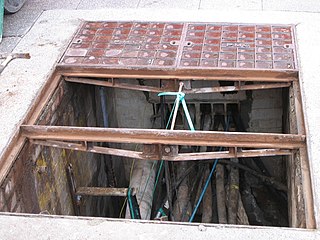 W
WA manhole is an opening to a confined space such as a shaft, utility vault, or large vessel. Manholes are often used as an access point for an underground public utility, allowing inspection, maintenance, and system upgrades. The majority of underground services have manholes, including water, sewers, telephone, electricity, storm drains, district heating, and gas.
 W
WA manhole cover or maintenance hole cover is a removable plate forming the lid over the opening of a manhole, an opening large enough for a person to pass through that is used as an access point for an underground vault or pipe. It is designed to prevent anyone or anything from falling in, and to keep out unauthorized persons and material.
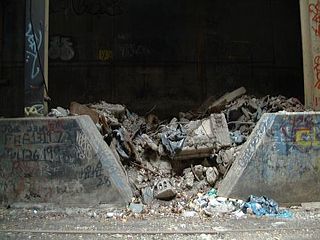 W
WMole people are homeless people living under large cities in abandoned subway, railroad, flood, sewage tunnels, and heating shafts. The term may also refer to the speculative fiction trope of an entirely subterranean society.
 W
WPetra, originally known to its inhabitants in as Raqmu or Raqēmō (𐢚𐢛𐢓𐢈), is a historic and archaeological city in southern Jordan. Petra lies around Jabal Al-Madbah in a basin surrounded by mountains which form the eastern flank of the Arabah valley that runs from the Dead Sea to the Gulf of Aqaba. The area around Petra has been inhabited from as early as 7000 BC, and the Nabataeans might have settled in what would become the capital city of their kingdom, as early as the 4th century BC. However, archaeological work has only discovered evidence of Nabataean presence dating back to the second century BC, by which time Petra had become their capital. The Nabataeans were nomadic Arabs who invested in Petra's proximity to the trade routes by establishing it as a major regional trading hub.
 W
WA pit cave, shaft cave or vertical cave—or often simply called a pit or pot ; jama in South Slavic languages scientific and colloquial vocabulary —is a type of cave which contains one or more significant vertical shafts rather than being predominantly a conventional horizontal cave passage. Pit caves typically form in limestone as a result of long-term erosion by water. They can be open to the surface or found deep within horizontal caves. Among cavers, a pit is a vertical drop of any depth that cannot be negotiated safely without the use of ropes or ladders.
 W
WRock-cut architecture is the creation of structures, buildings, and sculptures by excavating solid rock where it naturally occurs. Rock-cut architecture is designed and made by man from the start to finish. In India and China, the terms cave and cavern are often applied to this form of man-made architecture. However, caves and caverns that began in natural form are not considered to be rock-cut architecture even if extensively modified. Although rock-cut structures differ from traditionally built structures in many ways, many rock-cut structures are made to replicate the facade or interior of traditional architectural forms. Interiors were usually carved out by starting at the roof of the planned space and then working downward. This technique prevents stones falling on workers below. The three main uses of rock-cut architecture were temples, tombs and cave dwellings.
 W
WRoof and tunnel hacking is the unauthorized exploration of roof and utility tunnel spaces. The term carries a strong collegiate connotation, stemming from its use at MIT, where the practice has a long history. It is a form of urban exploration. Some participants use it as a means of carrying out collegiate pranks, by hanging banners from high places or, in one notable example from MIT, placing a life-size model police car on top of a university building. Others are interested in exploring inaccessible and seldom-seen places; that such exploration is unauthorized is often part of the thrill. Roofers, in particular, may be interested in the skyline views from the highest points on a campus. On August 1, 2016, Red Bull TV launched the documentary series URBEX – Enter At Your Own Risk, that also chronicles roof and tunnel hacking.
 W
WSewer alligator stories date back to the late 1920s and early 1930s; in most instances they are part of contemporary legend. They are based upon reports of alligator sightings in rather unorthodox locations, in particular New York City. The New York Times reports the city rescues several alligators per year, some directly from homes where they are kept as illegal pets, and some from outside though mostly above-ground. Though escapees and former pets may survive for a short time in New York sewers, longer-term survival is not possible due to low temperatures and the bacteria in human feces. Sewer maintenance crews insist there is no underground population.
 W
WA shell grotto is a type of folly, a grotto decorated with sea shells. The shell grotto was a popular feature of British country house in the 17th and 18th centuries. It suited the Baroque and Rococo styles and often represented the mimicry of architectural features from the Italian Renaissance. The idea of a grotto was originally a means to enhance a dank undercroft, or provide an antechamber before a piano nobile, but later it became a garden feature independent of the house, sometimes on the edge of a lake, with water flowing through it.
 W
WSmuggling tunnels are secret passages used for the smuggling of goods and people. The term is also used where the tunnels are built in response to a siege.
 W
WA storm shelter or storm cellar is a type of underground bunker designed to protect the occupants from violent severe weather, particularly tornadoes. They are most frequently seen in the Midwest and Southeastern United States where tornadoes are generally frequent and the low water table permits underground structures.
 W
WA storm drain, storm sewer, surface water drain/sewer, or stormwater drain is infrastructure designed to drain excess rain and ground water from impervious surfaces such as paved streets, car parks, parking lots, footpaths, sidewalks, and roofs. Storm drains vary in design from small residential dry wells to large municipal systems.
 W
WSubterranean fauna refers to animal species that are adapted to live in underground environment. Troglofauna and stygofauna are the two types of subterranean fauna. Both are associated with hypogean habitats – troglofauna is associated with terrestrial subterranean environment, and stygofauna with all kind of subterranean waters.
 W
WA subterranean waterfall or underground waterfall is a waterfall located underground, usually in a cave or mine. They are a common feature in cave systems where there are vertical or near vertical geological structures for the weathering process to exploit, and sufficient gradient between the sink and the rising. The highest known subterranean waterfall is in Vrtoglavica Cave in Slovenia, and is at least 400 metres (1,300 ft). A renowned example in the United States is Ruby Falls, 44 metres (144 ft) high, in Lookout Mountain Caverns, a show cave in Tennessee.
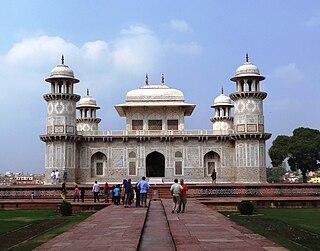 W
WA tomb is a repository for the remains of the dead. It is generally any structurally enclosed interment space or burial chamber, of varying sizes. Placing a corpse into a tomb can be called immurement, and is a method of final disposition, as an alternative to for example cremation or burial.
 W
WTrench warfare is a type of land warfare using occupied fighting lines largely comprising military trenches, in which troops are well-protected from the enemy's small arms fire and are substantially sheltered from artillery. Trench warfare became archetypically associated with World War I (1914–1918), when the Race to the Sea rapidly expanded trench use on the Western Front starting in September 1914.
 W
WTroglofauna are small cave-dwelling animals that have adapted to their dark surroundings. Troglofauna and stygofauna are the two types of subterranean fauna. Both are associated with subterranean environments – troglofauna are associated with caves and spaces above the water table and stygofauna with water. Troglofaunal species include spiders, insects, myriapods and others. Some troglofauna live permanently underground and cannot survive outside the cave environment. Troglofauna adaptations and characteristics include a heightened sense of hearing, touch and smell. Loss of under-used senses is apparent in the lack of pigmentation as well as eyesight in most troglofauna. Troglofauna insects may exhibit a lack of wings and longer appendages.
 W
WUrban exploration is the exploration of manmade structures, usually abandoned ruins or hidden components of the manmade environment. Photography and historical interest/documentation are heavily featured in the hobby and it sometimes involves trespassing onto private property. Urban exploration is also called draining, urban spelunking, urban rock climbing, urban caving, building hacking, or mousing.
 W
WUtility location is the process of identifying and labeling public utility mains that are underground. These mains may include lines for telecommunication, electricity distribution, natural gas, cable television, fiber optics, traffic lights, street lights, storm drains, water mains, and wastewater pipes. In some locations, major oil and gas pipelines, national defense communication lines, mass transit, rail and road tunnels also compete for space underground.
 W
WA utility tunnel, utility corridor, or utilidor is a passage built underground or above ground to carry utility lines such as electricity, steam, water supply pipes, and sewer pipes. Communications utilities like fiber optics, cable television, and telephone cables are also sometimes carried. One may also be referred to as a services tunnel, services trench, services vault, or cable vault. Smaller cable containment is often referred to as a cable duct or underground conduit. Direct-buried cable is a major alternative to ducts or tunnels.
 W
WA utility vault is an underground room providing access to subterranean public utility equipment, such as valves for water or natural gas pipes, or switchgear for electrical or telecommunications equipment. A vault is often accessible directly from a street, sidewalk or other outdoor space, thereby distinct from a basement of a building.